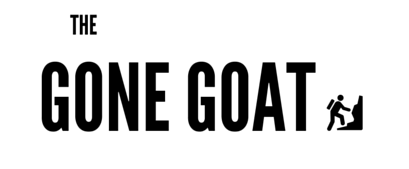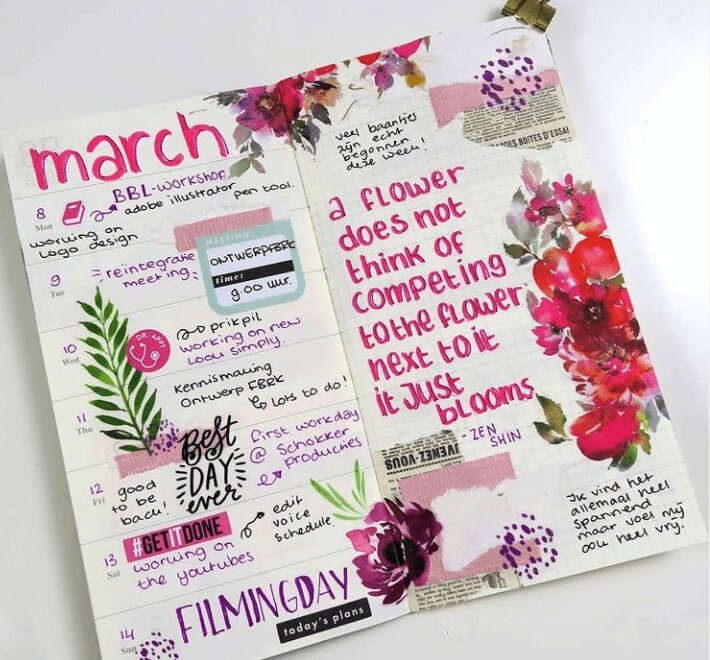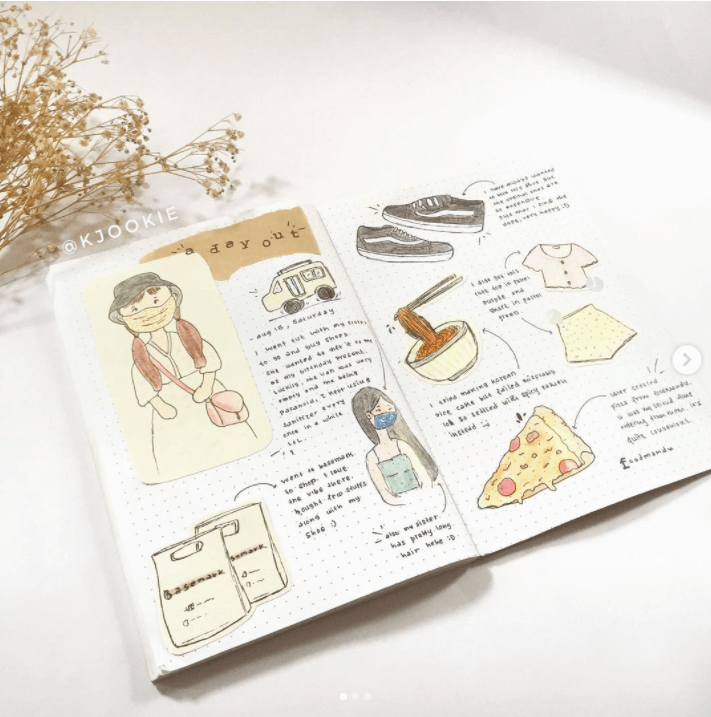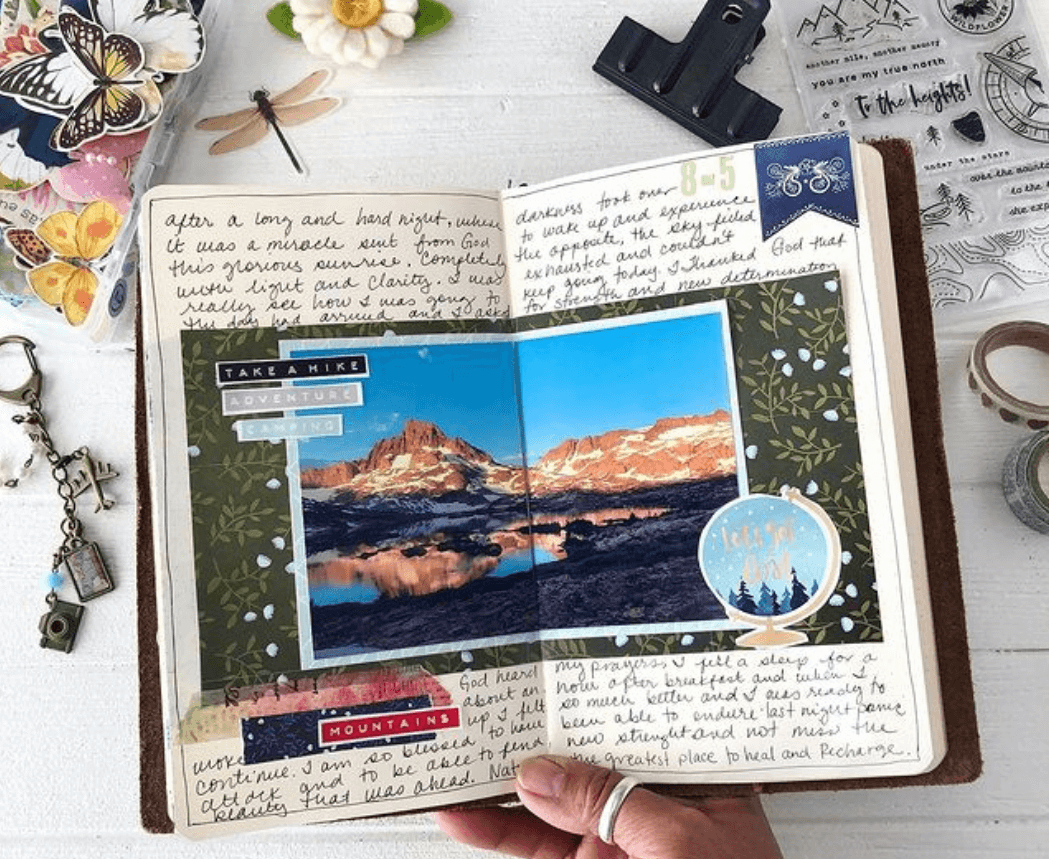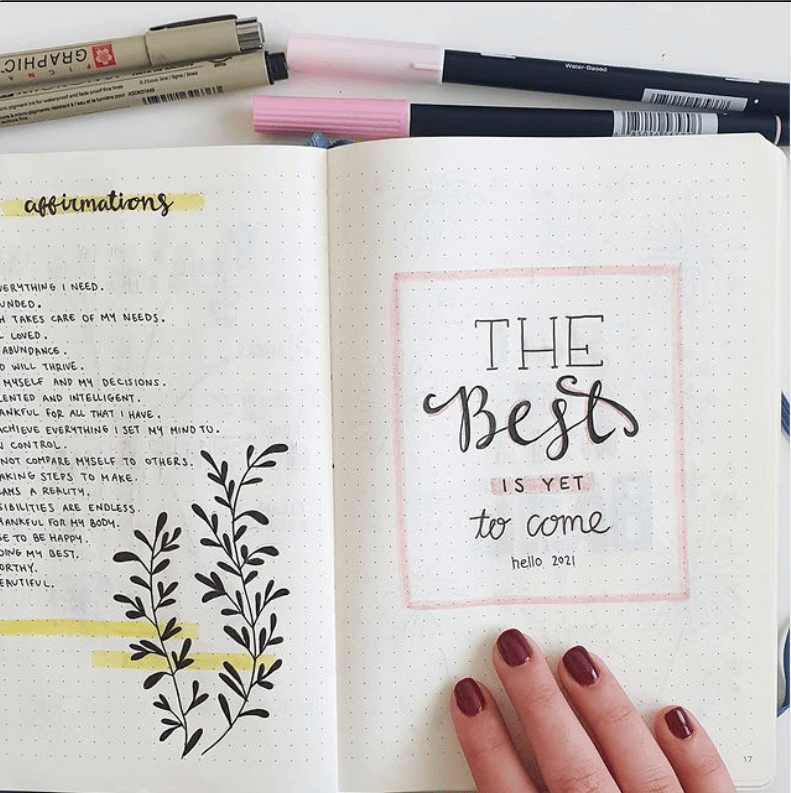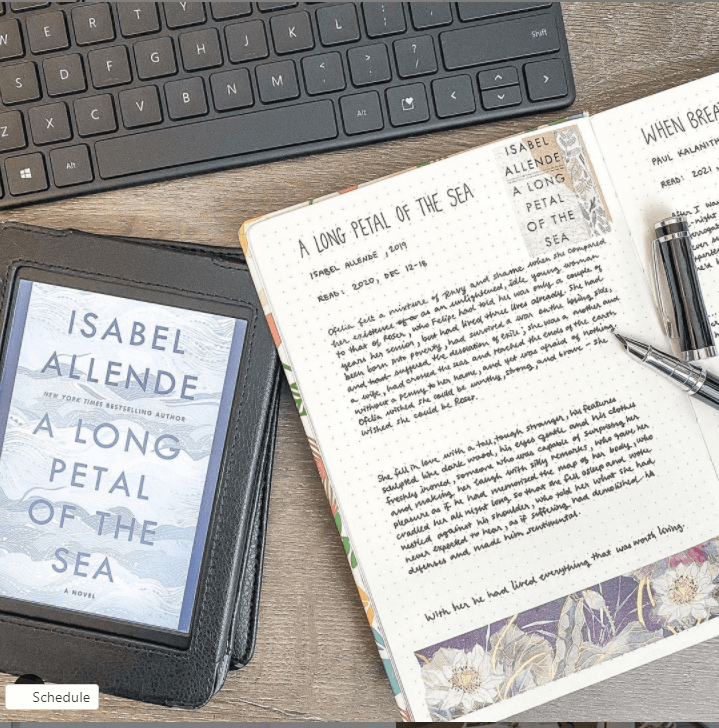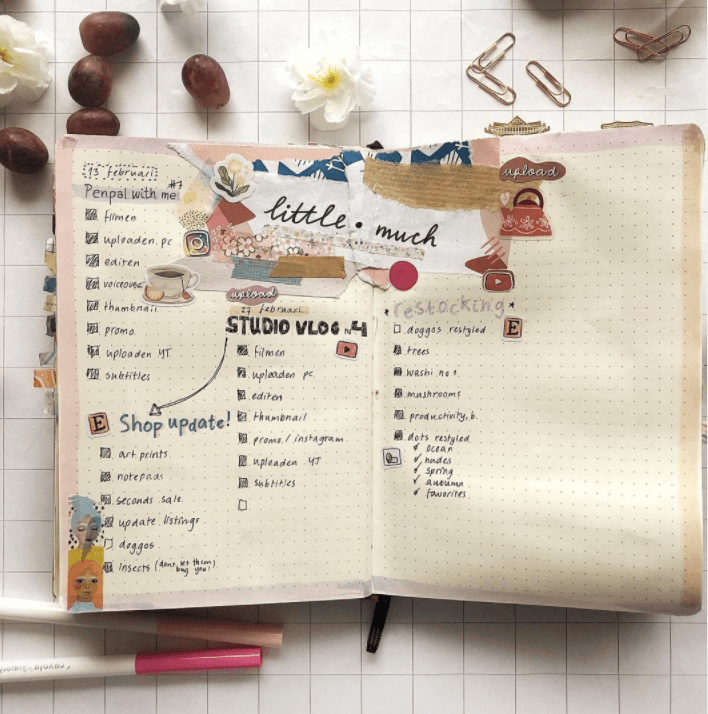10 Different Types of Journals To Channel Your Thoughts
/If you have grown up changing and experimenting with a composition of journals and finding that adult journaling has morphed into something deeper, then you’re just like me.
The different types of journals have changed — maybe we have become wiser, maybe our mental health has been affected or maybe we find ourselves documenting feelings and things in life.
I used to always have several journals going at a time. It started with the innocent diary logging in what I did every hour of the day and now being amongst nature and documenting about my love for hiking and the general outdoors.
I find happiness in collecting dried flowers and leaves and mapping them with my thoughts or a little quote of the day on how I feel.
But the most important thing that you should know is that there is no right or wrong for one to focus on writing a journal.
There may be many different types of journals; you could have a wine journal, a plant or a project journal or here-anything-goes doodle journal.
We are all looking for that next thing that move us and shake us, and for me, sometimes it is the power of the written word. There are three things why you should journal:
It evokes mindfulness and helps you remain present
It is emotionally cathartic
It also gives you great confidence and sharpens your individuality
Here are the best type of journal to channel your thoughts and let your mind be free
Disclosure: Some of the links below are affiliate links. I only provide unbiased and completely honest recommendations. Read more about the site’s privacy policy.
10 Different Type of Journals To Channel Your Thoughts
1. The Free-Flowing Thoughts Journal
Source @simplycreativekyra
When I started my journal, I didn’t want my thoughts to be restricted. I found ways to start my journaling with various statements.
My first statement was ‘She isn’t me’ and that statement is sometimes true today whenever I suffer from impostor syndrome.
I have a lot things left unsaid that I want to tell people and sometimes myself; the free-flowing thoughts journal can be worked with any blank notebook.
It is a safe space for you to echo your thoughts, change up the rules, and normalise topics in your head that are too sensitive to have a conversation about but are perhaps better for it to be penned down!
It is ultimately a blank canvas for you to pour out your feelings!
Tools you’ll need:
2. The Artistic Doodler Journal
Source: @Kjookie
There’s an artistic side in each one of us even if we say “I can’t draw!”. Truth is, I am not the best with doodling and don’t particularly have neat drafts of doodles on my book but I find by practising shapes and drawing simple objects, I have gotten used to doodling!
Some of the best drawing ideas are available when you pause and spent time observing things more closely!
You can always opt for simple doodling and infuse it with colours to make it pop or a comic-style strip doodle or ‘a day out’ kinda doodle where you draw objects to describe your day.
You don’t have to put pressure on yourself to make it artistic and I find just little doodles help in visualising how your days and feelings look like.
Tools you’ll need
3. The Plant Journal
Source: @scintillating.artt
The lockdown may have made us realised our love for plants and green things. If you are an aspiring plant parent, this is your time to get personal with each leafy and spiny friends.
Sketch them, study them or take a picture and tape it in your book and study the patterns, the watering schedule and map them out into days, weeks and months.
You’ll find it super therapeutic to be able to reflect and look at the little details that we take for granted when it comes to having the plant life.
Tools you’ll need:
4. The Outdoors And Nature Journal
Source: @Whitesugardesigns
Nature is amazing but it is also incredibly intricate! The soil, the weather, the mountains, the birds — there are thousands of ways to describe every moment witnessed.
Nature journaling is the process of sharpening your observations about plants, trees and the wilderness as you explore via different outdoor means whether it is walking, hiking or a bike ride.
Perhaps it was a sunny and gusty walk around the fields the other day, with blue skies and you witnessed thousands of little egrets flying over.
You could highlight your walk of the day and fill it with little factoids of information that you learned about or just enjoy the storytelling process of climbing that epic mountain trail!
Tools you’ll need:
5. The Gratitude Journal
Source: @sianbenshaanan
The gratitude journal has boomed in popularity and rightly so, all it takes is for you to write down the top 3 things that have given you utmost happiness and what you’re thankful for!
It could be simple positive affirmations as well that has given you the best possible boost this morning or a pleasant book that has altered your perspective in life!
This trend of “gratitude journalling” are important reminders to appreciate the people around you and the current position you’re at!
It is a great pick-me-up and positive tool! The most popular one used by many people is “The Five Minute Journal”
Tools you’ll need
6. The Reading Journal
The key to keeping a reading journal is adding your own thoughts and indexing book pages and finding ways to expand your thought process.
It is not merely about writing a synopsis but highlighting key areas from the book, and making your little “Good Reads” version of a review.
If you love creative writing, the Reading Journal option is great to keep a list of your books and how it has changed your perspective over the years.
Imagine reading your book again down the road after 5 years and finding how different or same your opinions and thoughts were of the same story!
If you love collecting quotes about wandering, this is also a great way to keep it and build on it in the future.
Something I like to refer to if I am up in the mountains and I can go back to the inked pages in my book.
Tools you’ll need:
7. The Bullet Journal
Source: @_littlemuch
If you love coordinating your to-do lists, tracking goals and need to list down your plans for the day, the bullet journal is the perfect way to do it.
It is the most popular type of journal forms as everyone has tasks and lists to complete and check off but it can be pretty pleasing to the eye when bullet journaling is done right — you could mix it up and use calligraphy to spruce it up or have little doodles and prints pasted alongside your points and use magic marker pens to highlight the key things you need to look at.
Tools you’ll need:
8. The Travel Journal
Source: @Emilyscreation
There’s something romantic about carefully detailing out your plans creatively in a travel journal. It is akin to sharing your travel memories with your loved ones via a postcard.
You narrate your story, collect polaroid shots or pictures of the places that made a valid impression on you and proceed to write short descriptions or a story of why you visited that place.
Travel journaling is so much more than a basic story of what you ate and saw.
It is also how about you visualise the place and what is it about the culture, sights and sounds that have been forever etched in your memories!
I like my travel journals to be creative and fun to flip through. The moments recorded are key but you don’t need your travel journal to be filled with facts and figures.
You want to focus on the moments and key experiences and how it made you feel about the world!
Tools you’ll need:
9. The Unsent Letters Journal
SOURCE: postgnome.ru
What do you do when you have the urge to send letters and postcards to people but don’t particularly want to sent them just yet?
What if you want to send a letter to your future 50-year-old self or what would you have said to yourself if you were 10 years old?
This unsent letter format journaling is the perfect way to write fun and thoughtful letters without actually mailing it anywhere.
It is a great way to reflect, and remind yourself of the most important things in life and how things have changed and what you wished you didn’t bother taking so seriously in school at the risk of ruining your mental health perhaps.
I know I would say that it is not worth it and everything will work out in the end!
Tools you’ll need:
10. The Sporadic Journal
Source: @shiningsunct_
There are times when you have absolutely no mood to journal — this is where you form the habit of keeping a Sporadic Journal.
It doesn’t have to be a grand idea of something but just simple things that help sharpen your focus — perhaps some self-reflection thoughts of the day, perhaps the wispy clouds on a Saturday afternoon and perhaps the annoyance of getting your meal plans prepped in a single day or week!
This could be that sporadic journal where you whip out your best inky pens and pictures and craft something on a lazy evening!
Tools you’ll need
Journaling Supplies
The best journaling supplies for each category have been ironed out but if you want the best in quality and supplies to rule them all — here are my recommendations on where to begin.
Pen: The Most Important Object To Feel Your Writing
If you’re new to the journaling world, you could start with pencils and erasers of good quality so you erase as and when needed.
For pens, the best way to begin your journaling would be with fineliner pens. The great quality ones are Sakura Pigma Micron and Faber Castell.
Paper: Dotted, Lined, Squared or Blank Options?
There are many notebooks out there but if you want something that holds, the best ones are Rhodia notebooks or Leuchtturm versions of dotted, lined, squared, and blank options.
The difference between all four journals are:
Lined paper: Best for list-making, brain dumping and written entries!
Dotted paper: Best for bullet journaling, drafting layouts and they provide a guide for writing straight.
Squared paper: Great for graphs and trackers!
Blank paper: Great for doodling, mind mapping, sketching and free-hand drawing!
That’s all for all the journal ideas and tools you’ll ever need. Got another journal idea? Share with me in the comments below.
Like this? PIN IT!
